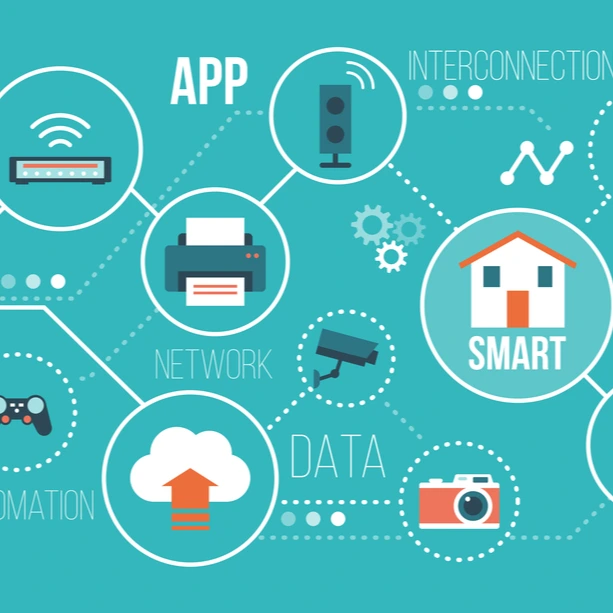There are multiple types of positioning technology systems available for consumers. These systems allow users to track the location of an intended asset. Unfortunately, no system is capable of solving every problem. Therefore, companies have to research and make informed decisions based on their needs. Some asset tracking systems are more expensive. While others are more accurate. Some are better for indoor tracking, while others are better outdoors. Here are the four most common systems companies are using today.
.webp?width=1000&name=location%20(1).webp)
Passive RFID
Passive RFID systems use tags with no internal power source and instead are powered by the electromagnetic energy transmitted from an RFID reader. Three main parts make up a passive RFID system – an RFID reader or interrogator, an RFID antenna, and RFID tags. Unlike active RFID tags, passive RFID tags only have two main components – the tag's antenna and the microchip or integrated circuit (IC).
As the name implies, passive tags wait for a signal from an RFID reader. The reader sends a signal to the passive tag. That signal or energy moves from the tag's antenna to the IC. The IC converts that energy into a radio frequency wave, which is sent back to the interrogation zone or RFID reader for interpretation.
There is one important distinction: passive RFID tags are not the same as barcodes or QR codes.
Bluetooth LE
The first form of Active RFID we will explore is Bluetooth Low Energy (LE). Bluetooth LE works for short-distance tracking. It is very accurate and can pinpoint the location of something up to 1-2 meters. This wireless low-power personal area network operates on the 2.4 GHz ISM band. Bluetooth LE sends out three different radio frequencies to experience minimal interference. Bluetooth LE devices have long battery life since they are activated when needed. When using Bluetooth LE tags, the energy consumption is very low.
Ultra-Wideband (UWB)
Ultra-wideband technology is another short distancing technology system that operates well indoors. UWB is the most accurate of the short distance technology and can pinpoint the location of an asset from a few centimeters to 3 dm. Ultra-wideband has become a more familiar term since Apple began including UWB technology in their iPhones. The frequency of UWB is in the range of 3.1 and 10.6 GHz.
However, one of the drawbacks of UWB is its limited range. The maximum range is 10-20m. UWB operates very similarly to Bluetooth LE. In fact, it sends out radio waves to a transmitter. Then it will measure the distance of the object by the amount of time it takes for the signal to come back to the original transmitter. Another drawback is the complexity to implement UWB. As a result of the complexity, UWB is an expensive and challenging tracking system to apply.
Join the AirFinder Difference!
- Innovation. Organizations can be freed up to innovate and bring more impactful products and services to market.
- Profitability. Increased profitability provides new opportunities to innovate and improve valuation.
- Digital Transformation. Discover competitive advantages, new revenue opportunities, improved customer relationships and increased efficiency.
Xtreme Low Energy (XLE®)
The final form of tracking system in discussion is Bluetooth Xtreme Low Energy (XLE®). XLE® was invented by Link Labs and is a way for businesses to ensure ROI. It works by using location beacons to determine the asset’s location up to a meter. In addition to its incredible accuracy it also consumes less power than BLE.
| Positioning Technology | Range | Accuracy | Advantages | Disadvantages |
| Passive RFID | 15m | Shows the last location scanned | 1. No battery 2. Low-cost 3. Device longevity |
1. High metal and liquid interference 2. High reader costs |
| BLE | 100m | 1-2m | 1. Low power consumption 2. Real-time updates 3. Wide standardization |
1. Battery-operated 2. Requires high-density transmitters |
| UWB | 10-12m | 3cm | 1. Most accurate 2. No interference 3. Transmits well through walls and floors |
1. Short-range 2. High cost per square meter |
| XLE® | 30m | 1m | 1. Long battery life 2. Low overall cost 3. Low power consumption |
1. Higher initial cost |
How to Determine Which Location Technology is Right for You
Each form of tracking technology varies in its capabilities. The three main factors one must consider before making a decision are the mobility of the asset, the frequency of system use, and how accurate the positioning technology is. After extensive research on which technology to implement, your company can save time and money with positioning technology.
Link Labs Asset Tracking Technology
Link Labs offers two different AirFinder products to help meet asset tracking needs. The first one is the Airfinder Everywhere. This device is perfect for tracking assets indoors or outdoors. It is an affordable product that offers a 3-7 year battery life. It can also be deployed anywhere and offers limitless tracking abilities.
The second product is the Airfinder OnSite device. Airfinder OnSite uses cutting-edge technology that surpasses BLE and UWB. How so? This product is equipped with the more efficient form of positioning technology, Xtreme Low Energy (XLE®).
Learn More About AirFinder Asset Tracking System
If you are interested in learning more about Airfinder Everywhere or Airfinder OnSite book a demo with us today!




